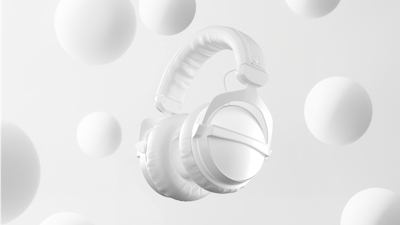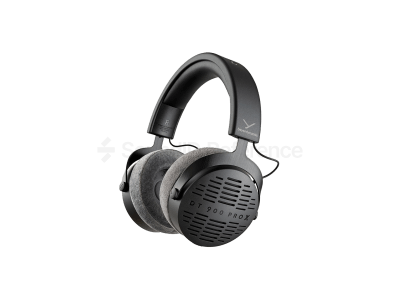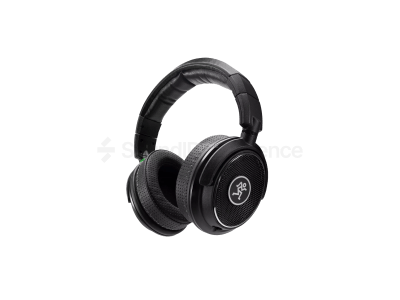Released back in 1988 (yes, more than 30 years ago!) the Sennheiser HD 25 was aimed mainly at film-making and broadcast professionals. The main design goals at that time were sound isolation and accurate tonal response so that broadcasters could hear themselves clearly. Over time the HD 25 has found itself useful for many applications. From official headsets of the Concorde supersonic airliner to covering a single ear of many DJs, the HD 25 excels when reliability and isolation are paramount. But what about accuracy? Read on to find out whether a 31 year old headphone can be useful for the modern sound engineer on the go.
- Superb isolation
- Low THD
- Field repairs possible without tools
- Generally very durable
- All parts available from Sennheiser
Pros list with SoundID Reference calibration
- Tonal neutrality
- U-shaped sound signature
- Not exactly comfortable
- The cable connection to the earcup is a known failure point
- Treble rolls-off after 15kHz
The HD 25-II is right on the border between efficient and inefficient headphones. On smartphones and dinkier laptop headphone jacks, one might feel the lack of volume headroom, whilst with most modern audio interfaces the HD 25-II should do fine. The isolation provided by these headphones also means that SPL can be kept down because it doesn’t need to compete with the outside din. 70 Ohm impedance shouldn’t be a problem and allows the HD 25-II to be used with up to 9 Ohm output impedance headphone outputs.

The U-curve strikes again! Mids to upper mids are okay, but the enormous boost at 100 Hz will accentuate every bass instrument string, or synth. The 8 kHz peak might be useful to pick out a hiss, but for mixing or mastering it’s a no-go. The peak will overemphasize overtones, making the engineer attenuate them too much thus resulting in a dull sounding mix. What’s more – the treble response drops like a rock after 15 kHz, which might not be an issue for older folks, but people under 30 will certainly feel a loss of “air”. Generally, this frequency response isn’t drastically worse than that of other on-ears at this price segment, like the Audio-Technica ATH-M60x for example.
Channel balance on the HD 25-II is fine, which isn’t surprising for a Sennheiser headphone. What can mess up the channel balance is a problem that’s inherent in all on-ear headphones – the sound varies, depending on the headphone’s position on the listener’s ears. This is another strike against using the HD 25-II where sound quality is critical.
You don’t want to be wearing them for too long. The pads are covered in a nylon-like cover which provides superb outside noise isolation, however, it can get rather sweaty after a few hours. The headband itself isn’t too bad, but the HD25-II relies on a rather strong clamp to keep the earcups snug on your ears. The clamp can get especially brutal if the listener is wearing glasses because the legs will probably get pushed into the temples of one’s head. In other words – you’re not buying the HD 25-II for comfort.
This is tricky, as Sennheiser offers the HD 25-II in many different packages. The HD 25-II can be bought in the “HD 25” package for 150$, which is barebones with a single 1.5m straight cable. This is a great deal, as you get the most useful things cheaper than most alternatives like the Audio-Technica ATH-M60x. The more expensive “HD 25 Plus” package throws in an extra coiled cable, a pouch and a pair of plush ear pads which are more comfortable, but have less low end extension and let more sound in.
Generally, harmonic distortion is inaudible, which is commendable. The distortion peak at 6khz is narrow enough to not cause trouble unless precision work is to be done around that area. Not bad for a 31 year old driver!
Consistency is mainly hurt by the fact that the HD 25-II is an on-ear headphone. Fit issues will change the sound, which is why one should stick to over-ear headphones when sound quality is paramount.
How much do they differ pair to pair in terms of frequency response?Consistency in manufacturing is Sennheiser’s forte. The HD 25-II is no different and shows very good consistency. Again, real-world consistency will depend on the fit.
Rating
Conclusion
After 31 years, the HD 25-II has found happy users in its intended broadcast segment, however, DJs and drummers adore it even more for its superb isolation. Ultimately mixing engineers should look elsewhere, unless forced to make do.
Final Rating
Calibration Enabled
Calibration






